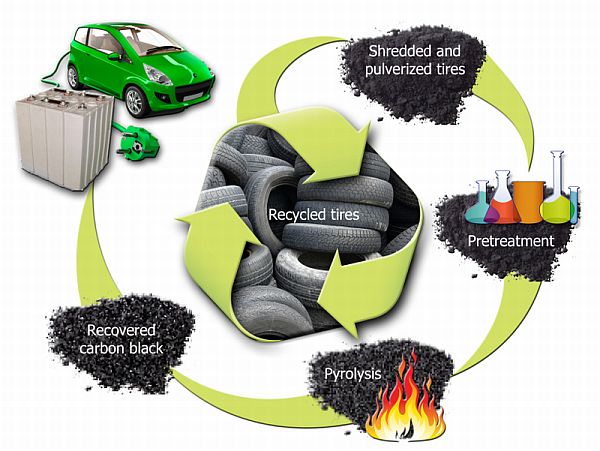Shredded scrap car tires have already find their way by means of recycling into the field of construction, floor mats, shoe soles and rubberized asphalt road material. Now, they would be morphing into another innovative role by becoming an integral part of hybrid and electric cars. Researchers at the Oak Ridge National Laboratory are trying to resurrect life from the discarded used tires in form of carbon material that would be used for lithium-ion battery anodes.
Conventionally graphite, a natural carbon material, is the basic building block for lithium anodes.
Morphing waste tire rubber into nanoporous carbon
Process starts by first introducing the shredded car tires into hot sulfuric acid bath, which converts them into micrometer-sized pieces. Resulting sludge is then sifted, rinse in water and finally transformed into a solid cake.
A highly porous carbon black material is produced when the cake is baked along with nitrogen. Upon gauging, the pores measured less than 2nm in diameter. The team then fabricated a tiny battery with the material, keeping it at the anode. Capacity of the new anode was reported around 390 mAh/g, which happens to be slightly more than the conventional graphite, that is, 370 mAh/g capacity.
Charge-discharge cycles
The research is far from any practical applications since the tire rubber derived carbon can undergo 100 charge-discharge cycles whereas conventional batteries maintain thousands of charge cycles. When it comes to efficiency, range and longevity, the newly evolved carbon material needs to compete with other superior high-capacity anode materials.
As of now, graphite makes the preferable choice for anode although the new technique proposes an economical and environmentally friendly option for its replacement. Using waste tires for energy storing applications not only looks promising but also the effort would prove boon especially when its other side reflects tapping environmental hazards, which is its direct offshoot.




